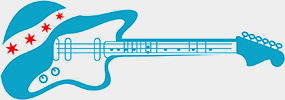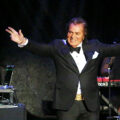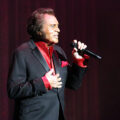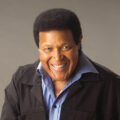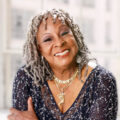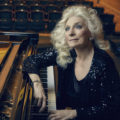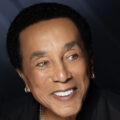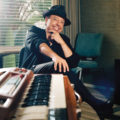“The Last Waltz” in Des Plaines, Arcada won’t be end of balladeer, rocker Engelbert Humperdinck
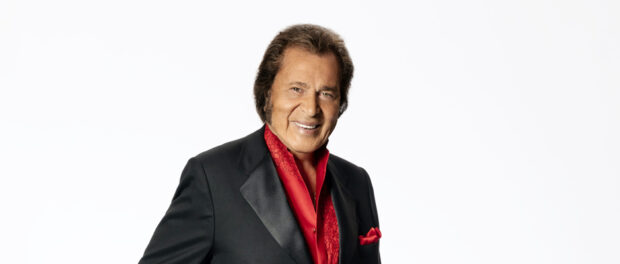 Photos provided by Greg Gorman
Photos provided by Greg Gorman
At 88-years-young with show business beginnings dating back to the 1950s, Engelbert Humperdinck may very well hold a record when it comes to longevity and unceasing love from fans who now span multiple generations.
He’s of course the globally renowned balladeer behind “Release Me,” “A Man Without Love,” “After The Lovin’” and “The Last Waltz,” the latter of which is also the name of an extensive tour that visiting the Des Plaines Theatre on Tuesday, April 8 and the Arcada Theatre on Wednesday, April 9.
But as the living legend tells Chicago Concert Reviews during a revealing phone call, he won’t be retiring anytime soon, but rather, turning to a rock and roll record to continue a legacy that includes headlining Las Vegas throughout the Elvis Presley-era, dethroning The Beatles and still racing up to the top of the Spotify charts today.
What do you have planned for these shows at the Des Plaines and Arcada Theatres?
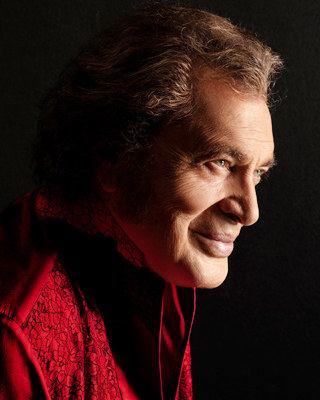 Engelbert Humperdinck: This is the show that I take around the world with me. The songs that I sing in the show are the songs that have established my career, that have been my lifeblood, my hit songs. I sing some of those and I sing some brand new songs. I’ve got a brand new album that’s coming out in a couple of months. It’s with Cleopatra Records and it’s a very unusual album for my style of singing.
Engelbert Humperdinck: This is the show that I take around the world with me. The songs that I sing in the show are the songs that have established my career, that have been my lifeblood, my hit songs. I sing some of those and I sing some brand new songs. I’ve got a brand new album that’s coming out in a couple of months. It’s with Cleopatra Records and it’s a very unusual album for my style of singing.
What can everyone expect from it?
Humperdinck: I really don’t know because it’s something I’ve never done before. I’ve taken songs from the big bands of the ‘80s, the hit songs from Aerosmith, and KISS, and The Cars, and done it my way (laughs) with the kind of backing that they used.
So this is going to be like a rock and roll record?
Humperdinck: (Laughs) More or less, yeah.
What inspired you to give this a try?
Humperdinck: I was talking to the record company, and we said we’d like to do something unusual and they came up with this idea that said, “oh, wow.” That suites me and I went with it. It took a whole year to finish, mind you, because of the interruptions of touring and those sort of things that came in the way of completing the album.
It’s in the mixing room right now. We don’t have a title. We don’t know what photographs to use yet on the front cause it will be a vinyl. Everybody’s doing the vinyls now. It’s much more exciting and it looks so much better than insignificant little discs. It makes you think you’ve done something, you know?
You of course began in the vinyl era and had many famous album covers beyond the songs themselves. What type of look were you hoping to establish?
Humperdinck: When I first started, I decided to give myself an image because when I saw The Beatles, they all had their hair the same way…so I decided to do something about my head. I grew these sideburns, and dyed my hair black and it grew long at the back. I gave myself that image, starting from the head, because the first thing people look at is your face and your head, not your feet. It was the beginning and it stamped my style. Everybody started to grow sideburns out. People like Kenny Rogers, and Glen Campbell, and even The Beatles [had] sideburns after that (laughs), so I was like a trendsetter in that respect.
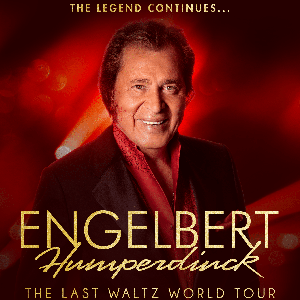 It’s been six decades from then until now and this tour is called “The Last Waltz”. Is this going to be your farewell to the road?
It’s been six decades from then until now and this tour is called “The Last Waltz”. Is this going to be your farewell to the road?
Humperdinck: It was to be this, but I’ll tell you something, I’ve spent three months at home here before I start my tour in April and I’ve been climbing the walls. I said to myself, “There’s no way I can give up this business.” It’s my lifeblood. It’s what I love to do and I want to keep doing it until I can’t do it anymore. But I can do it right now…I’m not gonna quit, no.
Can you recall any specific performances or visits to the Chicago area?
Humperdinck: I’ve been coming to the Chicago area since my first hit, “Release Me,” and I can’t tell you [how many times] I’ve played all over Chicago. I really have. I’ve even played, there used to be a theater in the round [Mill Run Playhouse]. I used to play a week at a time in those days and two shows a night, which was better than just coming in for one night at a time.
When you first rose to fame, how did you stand out from everything else?
Humperdinck: I was a kind of unusual find. The way it happened to me, for instance, I’m a ballad singer, and all of a sudden, I’m on the charts with The Beatles. And fortunately for me, the song I recorded stopped The Beatles from having their 13th number one, and of course, that was a big thing and it [was] made public. I was a big fan of The Beatles. I never thought I’d ever outshine The Beatles on the charts, but fortunately for me, it did happen and I don’t think it bothered them very much. They had so many hits, you know? But I had a very unusual beginning and that was it. I was there with all the rock bands and things like that, but this balladeer from Leicester, England came along and stayed up there.
What do you remember about recording “Release Me” and having it become one of your signature songs?
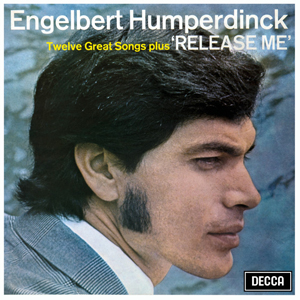 Humperdinck: When I heard it for the very first time, I knew it was a hit, but I didn’t realize that it had been a hit about five times before I recorded it. It was a big hit with Esther Phillips, an R&B version. It was a [country] hit with Ray Price. As a matter of fact, when Ray Price used to sing his song after I recorded it, he used to say, “You know, this song belonged to me until Engelbert Humperdinck came along” (laughs). Yeah, but I made it a world hit and it’s fantastic because it just spun around the world at number one.
Humperdinck: When I heard it for the very first time, I knew it was a hit, but I didn’t realize that it had been a hit about five times before I recorded it. It was a big hit with Esther Phillips, an R&B version. It was a [country] hit with Ray Price. As a matter of fact, when Ray Price used to sing his song after I recorded it, he used to say, “You know, this song belonged to me until Engelbert Humperdinck came along” (laughs). Yeah, but I made it a world hit and it’s fantastic because it just spun around the world at number one.
Speaking of rock bands, is it true that Jimmy Page played guitar on that track before he went on to be in Led Zeppelin? If so, what do you remember about him?
Humperdinck: Yes he did. Not too much because it’s a long time ago, but I’m just glad a man like that happened to be on my album. It’s fantastic.
You’ve also been a staple of Las Vegas ever since that record came out. What was it like being a top headliner during such a particularly golden era?
Humperdinck: Oh, it was unbelievable. When we did Vegas in the early days, we were there for a whole month. I did 56 shows in a row, one after the other. There were no days off, and then you finish that, and I went to Tahoe and did two weeks. We had 28 shows in a row. I used to do 300 shows a year and it was just amazing. It’s something that doesn’t happen in today’s world and it was a very exciting career.
How would you describe your relationship with Elvis Presley?
Humperdinck: That was a great meeting. As a matter of fact, he saw me first before I went to see him. He came to my show, and when he stood up and took a bow, it took ten minutes to quiet the audience down. In the end, I shouted, “Elvis, this is my show!” (Laughs) He spread his cape out and the audience went absolutely berserk. Of course, I went backstage and I thanked him for coming to the show. Then when he came to Vegas, I’d go see him and that’s how we made a bond.
Who are some of your other peers you’re particularly close to?
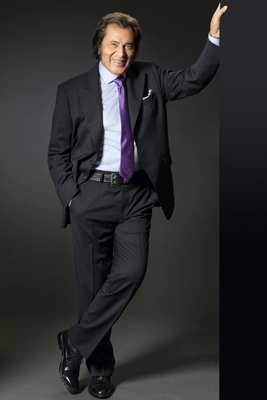 Humperdinck: I was close to Dean Martin. I liked him very much and we used to dine together a lot in Los Angeles. He was a wonderful man. I enjoy people. We meet people like Gene Simmons and Elton John, who are wonderful, wonderful people. They are real superstars because they don’t act it. They’re just very down to earth people, but so, so talented.
Humperdinck: I was close to Dean Martin. I liked him very much and we used to dine together a lot in Los Angeles. He was a wonderful man. I enjoy people. We meet people like Gene Simmons and Elton John, who are wonderful, wonderful people. They are real superstars because they don’t act it. They’re just very down to earth people, but so, so talented.
Tell us a bit about hosting “The Engelbert Humperdinck Show” and any guests that really stood out to you.
Humperdinck: I had some massive guests on there. I was really green at the time because I’d only, just a couple of years, been successful with hit songs. But I did happen to have one, two and three in the charts at the same time and not many people have had that kind of success recording-wise. The show brought a lot of massive artists from the States. I had the pleasure of even singing with Tony Bennett. Jerry Lewis came over and there were some massive comedians that came over, names like Jack Benny, and Phil Silvers and all these people who did spots on the show. I got to meet like The Four Tops and that sort of thing.
What are some of the other musical styles you’ve recorded besides the ballads?
Humperdinck: Yeah, I did disco. I more or less kept in the ballad side because they sold the most and people enjoyed hearing me sing ballads more than anything, so I stayed in that lane. But now (laughs), I’ve got an album [coming] out, which is totally different to whatever I have done before. I even sound different. As a matter of fact, I’m going to tell you a little secret. I prepared myself as I got older because, for the simple reason that the older you get, the slower your vibrato gets. So about 20 years ago, I started singing without vibrato and it stood me in good shape because I don’t have a slow vibrato now. I have a very contemporary sound, which is what I want and I needed to keep going in this industry.
Are there any types of projects you’ve never done before but always wanted to?
Humperdinck: When I first started in the industry, my manager was Gordon Mills. He had a stable of Gilbert O’Sullivan, Tom Jones and myself, so I was the balladeer, and Gilbert was like the folk singer, and Tom Jones was the rock and roll singer, so we kept in that vein…During my early career when everything was happening, boiling with hits all over the place and traveling the world all over again, a lot of Hollywood scripts came to Gordon Mills for me. He didn’t want me to be in the movies, so he used to bury them. I didn’t know that until later on in life. I could’ve been doing some movies just the way Elvis did his.
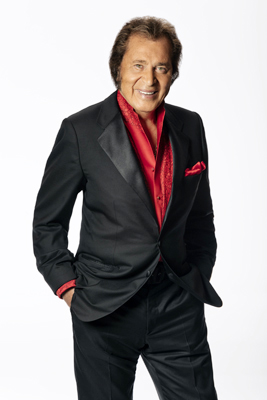 Nonetheless, you’ve had many other milestones. What do you consider to be the most important?
Nonetheless, you’ve had many other milestones. What do you consider to be the most important?
Humperdinck: I think the fact that I’m still around, still doing things, making new projects. I think that’s an amazing thing when you talk about a career that’s lasted 58 years. Not many can voice that accolade, you know?
I feel like you might be very close to a record in terms of longevity. Can you think of anyone else along those lines?
Humperdinck: I think Tony Bennett was one of them. I think he was a longtime, major artist and his career got better as he got older. I think that’s happened in my life.
How have you been able to last this long?
Humperdinck: I’ve been very fortunate I had a great following. I had a very strong following…They just stay very, very, very true to me and they’ve been like that ever since I first started…It’s a cult following that I have. They just love coming to see my show and being part of it. I make them a general part of it by receiving them in a nice way, by shaking their hands at the end of the show and thanking them for being such adoring fans.
What do you think of the music industry and show business now? It has changed a lot from when you started.
Humperdinck: Oh yes, it has changed quite a lot. It really has. I’m a lover of melody, and good lyrics, and good storylines, and things like that, but you have to move with the times. You’ve gotta go with what’s happening, otherwise you just fall behind and lose the race. This is one big race and you’ve gotta keep up with people, so you have to do what’s happening.
Who have you been listening to these days?
Humperdinck: I put the TV on and I watch what’s going on music-wise with “The Voice,” “American Idol” and all those places. The songs they sing are the songs of now. Everything is now and I listen to that. I guess that’s what tempted me to do this new album with the rock style.
If you were to pick a handful of your previous songs you’d want people to remember you by, what would they be?
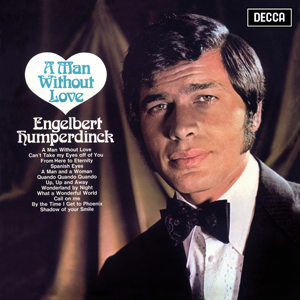 Humperdinck: I would have to say “Release Me,” “The Last Waltz” because [it] was played around the world in every dance hall from the get go and it’s still around today, and of course, “After The Lovin’” was an amazing song of mine that I dearly love. But there’s some wonderful songs on the early albums that I know after I’m dead and gone, those songs will come back and start being played.
Humperdinck: I would have to say “Release Me,” “The Last Waltz” because [it] was played around the world in every dance hall from the get go and it’s still around today, and of course, “After The Lovin’” was an amazing song of mine that I dearly love. But there’s some wonderful songs on the early albums that I know after I’m dead and gone, those songs will come back and start being played.
I recorded this song about 50-something years ago, a song called “A Man Without Love,” and then along came that “Moon Knight” series on television. Young people watch that show, and all of a sudden, “A Man Without Love” went to number one on the Spotify charts, back into the charts, and young people came to the show to see what Engelbert Humperdinck was all about. I saw new faces in the crowd, young faces.
What do you ultimately hope your legacy will be?
Humperdinck: It can only be one thing: my music. When I listen to people on the radio who have been my friends and they pass, every time they play one of those songs, like for instance, if they play a song by Dean or Kenny Rogers, memories come back to my friendship with them. It’s just a wonderful feeling to know that they are still around because of their music.
Engelbert Humperdinck performs at the Des Plaines Theatre on Tuesday, April 8 and the Arcada Theatre on Wednesday, April 9. For additional details, visit Engelbert.com, DesPlainesTheatre.com and ArcadaLive.com.
